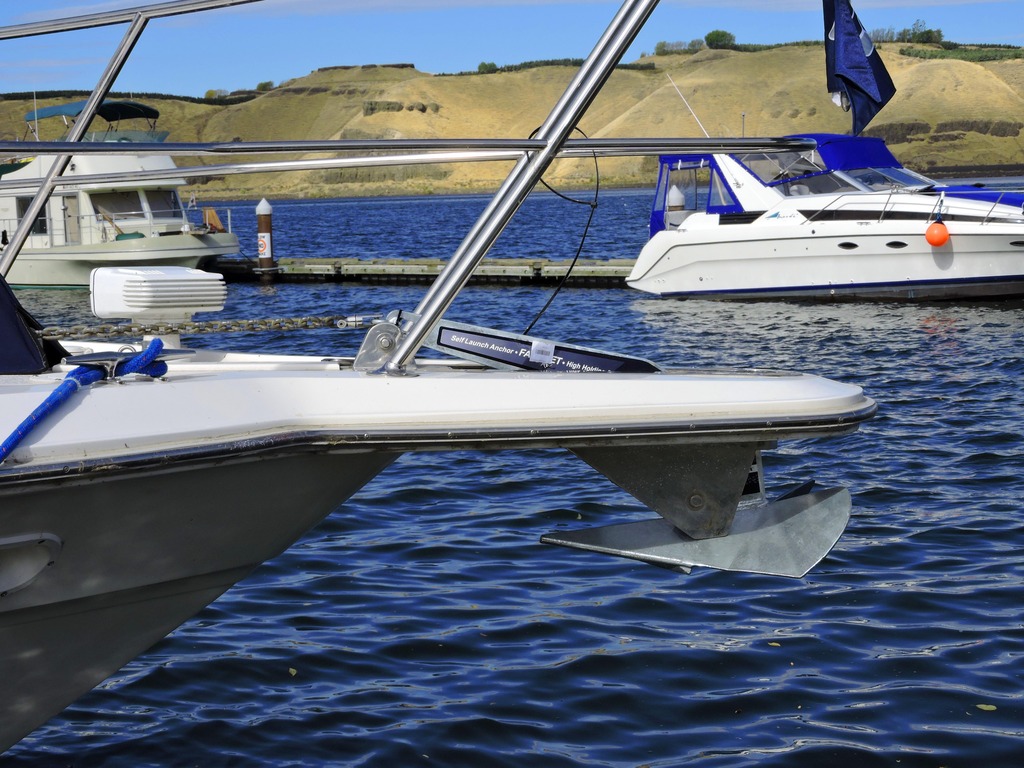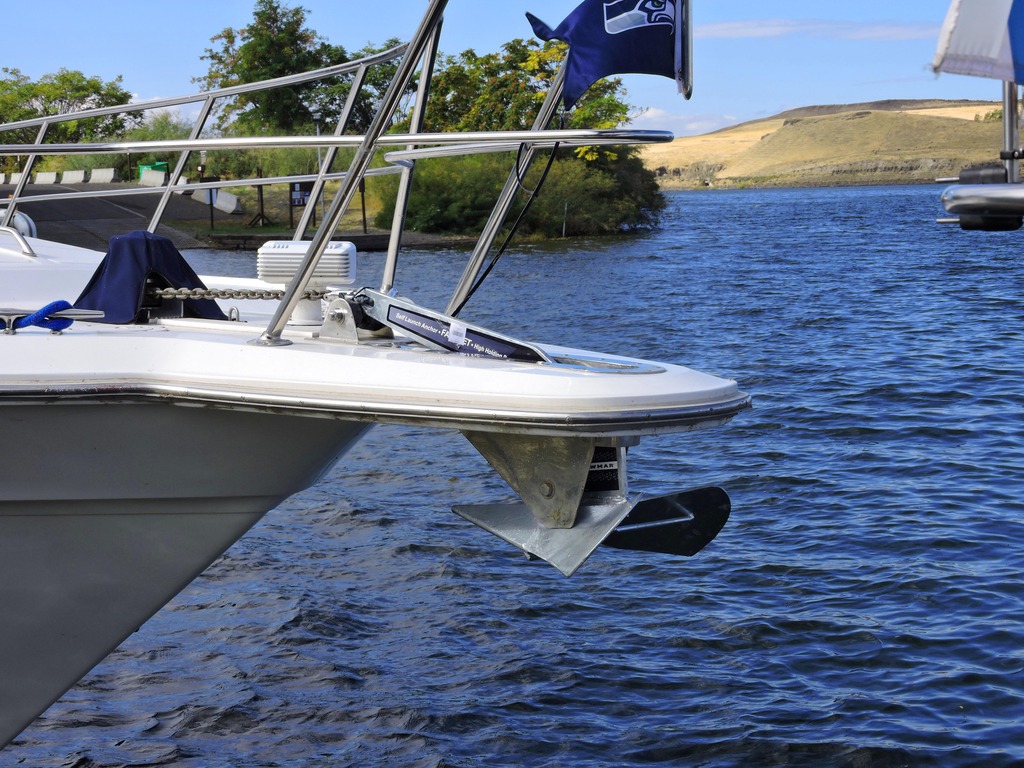I'll put this up as an example of how it can be done, but there are many options. This is the one that just seems to work on my boat.
I don't have hawse holes, but I have chocks on the fwd caprail. My windlass is mounted on a hollow teak box with a SS pipe for the rode. Fwd of the windlass is a back-plated cleat solidly mounted through the top SS plate. Aft of the windlass is a sampson post. The windlass and the sampson post are stoutly mounted and back-plated. The deck is probably 2-2 1/2 inches thick.
My rode is 120 ft 5/16 chain and 240 ft of
5/8 8 ply nylon Brait. Like mentioned above, if the anchorage is shallow, sometimes I'll be anchored on all chain. This is where the snubber comes in handy. On deeper anchorings, if I have 120 ft of chain plus another 50-100 ft of Brait, I'll just tie off to the cleat fwd of the windlass to unload the windlass. There's no need for the snubber since the Brait line acts as the snubber.
The white 'leash' seen in the picture is not for anchoring but is a cable to secure the anchor while underway to prevent an unintentional deployment since the anchor rolling is self-deploying. In other words, once chain tension is released, the anchor will roll off the fwd roller without the need for a push by the crew. Aft of the sampson post is my recessed washdown hose canister.
Be sure whatever you secure your rode to is very securely mounted with backing plates. If your cleats are undersized or not properly secured, it might be an east remedy to upgrade. Do you have access to the area behind/under the cleats?





 Either I didn't explain it well or you didn't read the whole post. I don't hook mine as shown in the video. I connect it as explained in the post to relieve the load on the windlass.
Either I didn't explain it well or you didn't read the whole post. I don't hook mine as shown in the video. I connect it as explained in the post to relieve the load on the windlass. 
 :
: